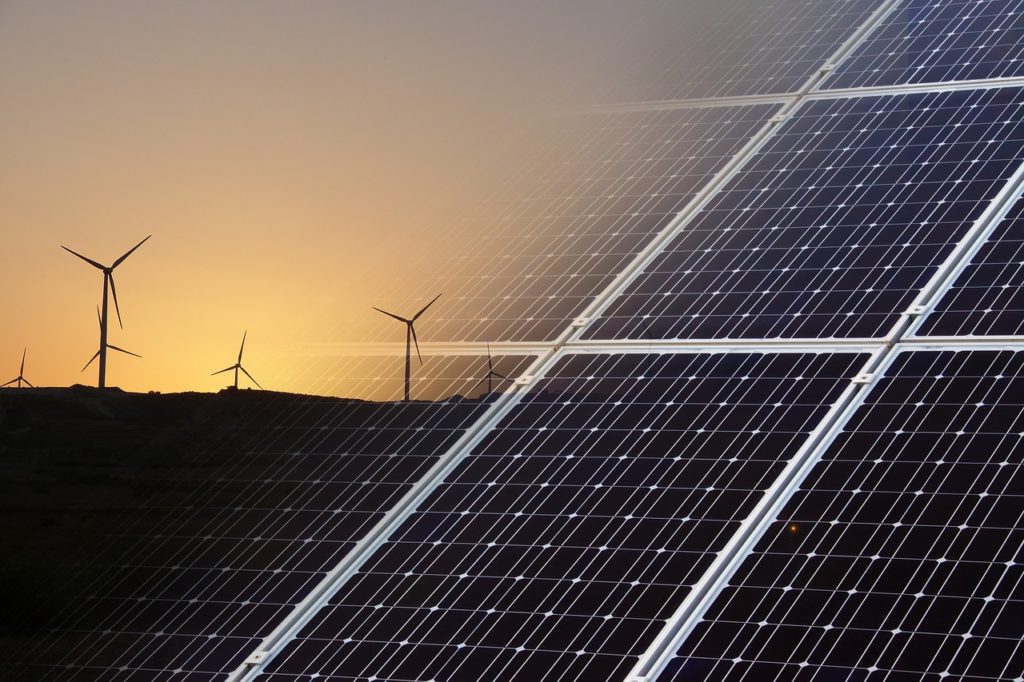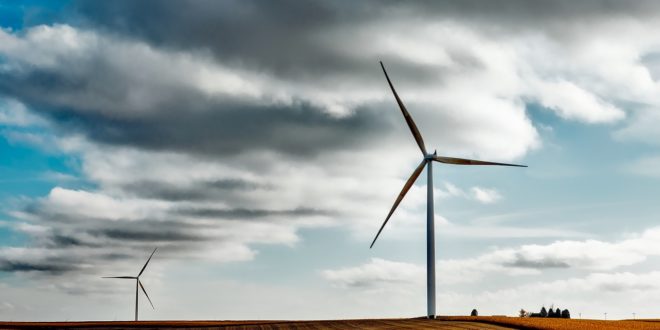Agricultural systems are requiring an increasing amount of energy to cope with the current and projected growth in demand. Unfortunately, increased use of nonrenewable energy has a detrimental impact on our environment. In today’s world, where the effects of climate change are very real and fast approaching, it is crucial to use sustainable processes for agriculture. Renewable energy can contribute greatly to transform the methods of food production, thereby having a positive effect on food security too.
What Is Renewable Energy?
Renewable energy, or green energy, is energy that comes from renewable energy sources. Direct Energy states, “Green energy, which includes green electricity, is clean energy. This means it is produced with little-to-no environmental impact and does not dispense greenhouse gases into the air that contribute to global warming, the way fossil fuels do.” Greenhouse gases contribute significantly to global warming and are a byproduct of energy that comes from fossil fuels.
Secondly, green energy is “renewable” and does not come from finite materials. Sources of green energy include wind, hydro, geothermal and solar energy. Due to these varied sources, renewable energy is also stable and can be harvested in many different locations all across the planet. This results in a reduced dependence on foreign countries for energy needs. Renewable energy is the most sustainable form of energy and is essential to safeguarding the future of our planet.
Agricultural Applications
Utilizing renewable energy has the potential to revolutionize agriculture. Today, “it takes about 10 units of fossil energy to create one unit of food energy,” states Emily Folk, a sustainability blogger for the Green Journal. In the past, this disparity was not as much a cause for concern as it is today, in a time when food requirements have dramatically increased due to population growth. To meet this raised demand, a change in energy sources is necessary. If farmers continue to use fossil fuels to feed the world, the climate will inevitably suffer, as argued by IPCC’s recent Special Report that urges decision-makers to enact policies that can keep temperatures from further rising.
Solar Power
Solar energy provides a feasible alternative. Experts at UCUSA write, “The amount of energy from the sun that reaches Earth each day is enormous. All the energy stored in Earth’s reserves of coal, oil, and natural gas is equal to the energy from only 20 days of sunshine.” Plants have used solar energy to produce food since the beginning of time, and so it stands to reason that the agricultural industry can benefit from the practically unlimited power of the sun.
UCUSA states that solar energy can be used in a number of ways. These include using solar energy to reduce a farm’s electric bills, using solar heat collectors to dry crops and warm livestock buildings and greenhouses, and even using solar water heaters for dairy operations. Folk, in her article for the Green Journal, suggests that farmers can also use solar power to fuel their crop irrigators, making it easier to farm drylands. For example, farmers in India save 161 percent of their earnings every year by switching from diesel irrigation systems to solar-powered ones.

Wind Power
The power of the wind can also be harnessed for agricultural purposes. According to the UCUSA, farmers can plant crops and graze livestock right by a wind turbine’s base, as each turbine only uses less than half an acre of space. In a previous article, we’ve written about Taylor farms, the leading producer of value-added produce and healthy fresh foods in North America. In an effort to be more sustainable, the farm now utilizes a three-part wind, solar, and cogeneration energy system at its facility in Gonzales, California. While not all farmers can afford these advanced energy systems or even single wind turbines, wind power cooperatives have started to form in order to spread and maximize the benefits of wind power.
Renewable Energy and Food Security
There’s no doubt that renewable energy can positively impact agricultural processes, but according to top officials at the International Renewable Energy Agency (IRENA), adoption of renewable energy will also help ensure food security across the globe. A Gulf News article quotes Adnan Z. Ameen, director-general of IRENA on the sidelines of the 18th meeting of the agency’s Council, one of IRENA’s two governing bodies: “Many developing countries lose 30 to 40 percent of agricultural harvest due to lack of storage and processing facilities in rural areas.” This loss harshly affects local populations. Renewable energy, however, could help power storage and processing facilities and significantly reduce food waste.
Additionally, adequately powered facilities could also help combat food contamination. Experts at MDS state that foodborne illness is a major problem in the U.S. and is getting worse in some respects. Processing facilities, and their lack thereof, are at the root of this problem. Thus, it is integral to take every available precaution to minimize the risk of contamination at processing and storage facilities.
The first step, however, is to ensure that enough storage and processing facilities exist to keep up with current harvest rates. A decentralized supply chain, in which agriculture and production facilities are closer to consumers, best meets the specific needs of people in critical areas, but supplying these facilities with sufficient power can be a challenge. Renewable energy provides a viable alternative for making more of these facilities globally available and increasing food security.
What Does the Future Hold?
With all the agricultural and environmental benefits of renewable energy, it’s a good thing that green energy generation is on the rise. IRENA’s latest statistics show that there was a 6.7 percent increase in renewable energy generation worldwide in 2016. Furthermore, the organization reported that “a record 167GW of the new capacity was installed in 2017, the biggest growth ever and 8.8 percent increase compared to the previous year. Solar and wind accounted for 85 percent of this growth.”
IRENA also estimates that by 2020, all commercialized renewable energy power generation technologies will be competitive with traditional sources of energy. This cost reduction will make renewable energy even more accessible to farmers and has great potential in transforming the agricultural industry. Across the globe, as seen at the Global Climate Action Summit in 2018, nearly 400 companies, cities, states, and regions have made a commitment to 100 percent renewable energy targets.
Hopefully, these statistics point to a bright future for sustainable agriculture and food security. After all, the use of renewable energy positively impacts agriculture and food security, and in the long run, our planet will be better for it.
 Alternative Energy HQ solar power for homes, wind energy, and bio fuel issues
Alternative Energy HQ solar power for homes, wind energy, and bio fuel issues








One comment
Pingback: Renewable Energy in Agriculture: The Way Forward